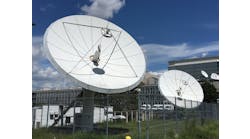5G is forecasted to reach 300 billion USD by 2025 as forecast in a recent report, “5G Technology, Market and Forecasts 2020-2030“. However, there are several misunderstandings about 5G that might lead to the wrong interpretation for the future. Below are 3 common ones you don’t want to underestimate.
Figure 1. 5G base station forecast. (Source: IDTechEx report "5G Technology, Market and Forecasts 2020-2030", www.IDTechEx.com/5G)
Misunderstanding #1: 5G networks need mmWave devices and massive MIMO
Don’t take it for granted that 5G network will need cm- or mm-wave devices/base stations at its earlier phases of deployment. In fact, most of the global commercialized 5G networks are based on sub-6 GHz 5G, which does not differ from the existing 4G LTE network significantly at the device level.
Internationally, telecom companies in South Korea are struggling to deploy enough mmWave 5G stations as mandated by the government. China does not even have a plan for adopting high-frequency 5G in its commercial 5G network. Also, at the early stage of 5G, the signal amplification of massive MIMO is not necessary, and active antennas and associated beam steering is not a must.
InvisiLight® Solution for Deploying Fiber
April 2, 2022Go to Market Faster. Speed up Network Deployment
April 2, 2022Episode 10: Fiber Optic Closure Specs Explained…
April 1, 2022Food for Thought from Our 2022 ICT Visionaries
April 1, 2022Misunderstanding #2: All 5G base stations are new builds
It’s easy to get excited for the large number of 5G base stations forecasted by vendors. Be sure NOT to confuse these forecasts with the actual market size. At the early stages of 5G, many countries choose to simply upgrade their existing advanced LTE (4G) stations to 5G. Thus, a considerable number of 5G stations at this point are actually the “old” stations.
Misunderstanding #3: 5G mainly focus on the telecommunications market
It is true that smart phones will continue to be the most important market for 5G, but only at the early stage. 5G’s potential goes way beyond the mobile phone. The goal for 5G is to create a universal network to link a diverse grouping of vertical applications. The promising markets include remote healthcare, private 5G for industrial usage, enhanced AR/VR, and more.
Like this Article?
Subscribe to ISE magazine and start receiving your FREE monthly copy today!
The potential of 5G is impressive. That’s why it’s critical to dive into the data to leverage its possibilities. Remember to trust only the researched facts and data in order to separate the real opportunities from the hype.









